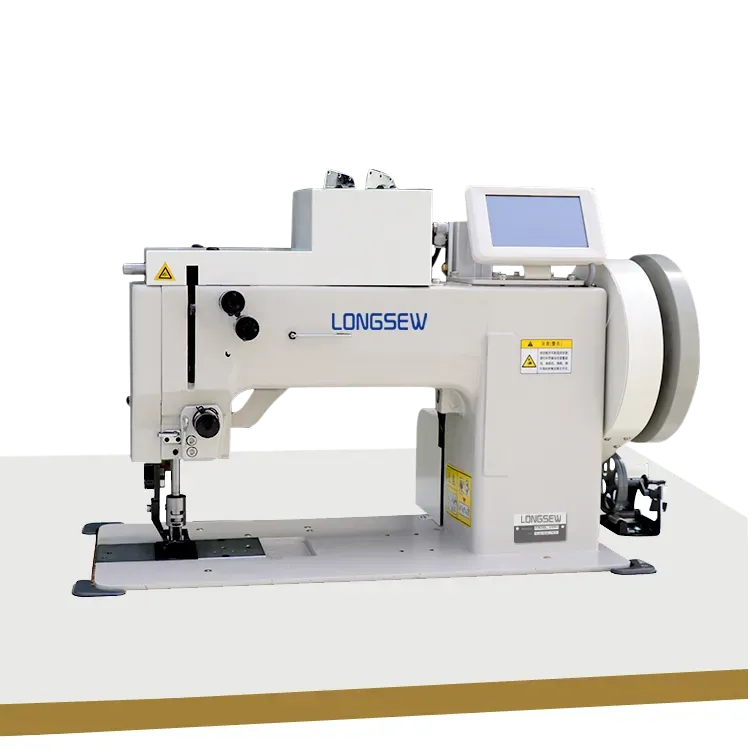sewing machine for fabric and leather
Choosing the Right Sewing Machine for Fabric and Leather
Sewing machines have evolved significantly over the years, providing crafters and professionals with tools that enhance creativity and productivity. While traditional sewing machines can handle various fabrics with ease, selecting a sewing machine specifically designed for both fabric and leather requires careful consideration. This article explores key features and tips for choosing the right sewing machine to tackle both mediums effectively.
Leathers and heavy fabrics present unique challenges. Unlike lightweight fabrics, leather is thicker and less forgiving, requiring specialization in the sewing machine's construction and capabilities. When looking for a sewing machine for both fabrics and leather, here are several features to consider
1. Power and Durability
A strong motor is essential for sewing through dense materials like leather. Machines with at least a 1.0-1.5 amp motor are recommended. These motors provide adequate power to punch through multiple layers of fabric and leather without stalling or breaking needles. Additionally, a sturdy build with a metal frame enhances durability, ensuring the machine withstands rigorous use over time.
2. Walking Foot or Teflon Foot
A walking foot or Teflon foot is a vital accessory for sewing leather, as it helps to feed the material smoothly through the machine. Regular presser feet may cause leather to stick or pucker, leading to an uneven seam. A walking foot has an additional set of feed dogs that work in conjunction with the machine's standard feed dogs, allowing both layers of fabric and leather to move together uniformly.
3. Adjustable Stitch Length
sewing machine for fabric and leather

When working with leather, it's crucial to have control over stitch length. A longer stitch (typically around 3-4 mm) is recommended for leather to prevent perforation and allow for a clean finish. Machines with adjustable stitch lengths give sewers the flexibility to adapt their work to different types of materials, from delicate fabrics to heavy leather.
4. Needle Options and Size
The right needle is key to successful sewing. Leather needles with a wedge-shaped point are designed specifically for penetrating leather without causing damage. Additionally, it's advisable to keep a variety of needle sizes on hand. Thicker needles are ideal for tougher materials, while finer needles work well with lighter fabrics. Ensure the sewing machine can accommodate different needle types.
5. Feed Mechanism
A reliable feed mechanism is essential for maintaining even stitches, especially when sewing thicker materials. Machines equipped with drop feed capabilities allow for better control over fabric movement, adding versatility to your sewing projects.
Conclusion
Choosing the right sewing machine for both fabric and leather requires attention to specific features that cater to the demands of each material. By considering power, durability, specialized feet, adjustable stitch lengths, and appropriate needle options, sewists can find a machine that enhances their crafting experience. Whether you are creating garments, home décor, or leather goods, investing in a capable sewing machine will ultimately enhance the quality of your work and expand your creative possibilities. With the right tools, both fabric and leather can transform into beautiful creations that showcase your unique style.
-
Boost Production Efficiency with a Pattern Sewing MachineNewsAug.29,2025
-
Industrial Excellence with the Best Heavy Duty Sewing MachineNewsAug.29,2025
-
Precision and Power with the Best Pattern Sewing MachineNewsAug.29,2025
-
Reliable Bulk Packaging Starts With the Right FIBC Sewing MachineNewsAug.29,2025
-
Advanced Packaging Solutions: Elevate Productivity with Jumbo Bag Sewing Machine and Industrial Stitching EquipmentNewsAug.29,2025
-
High-Performance Solutions for Bulk Packaging: FIBC Sewing Machine and MoreNewsAug.29,2025
-
Maximize Efficiency with an Industrial Cylinder Arm Sewing MachineNewsAug.28,2025


























